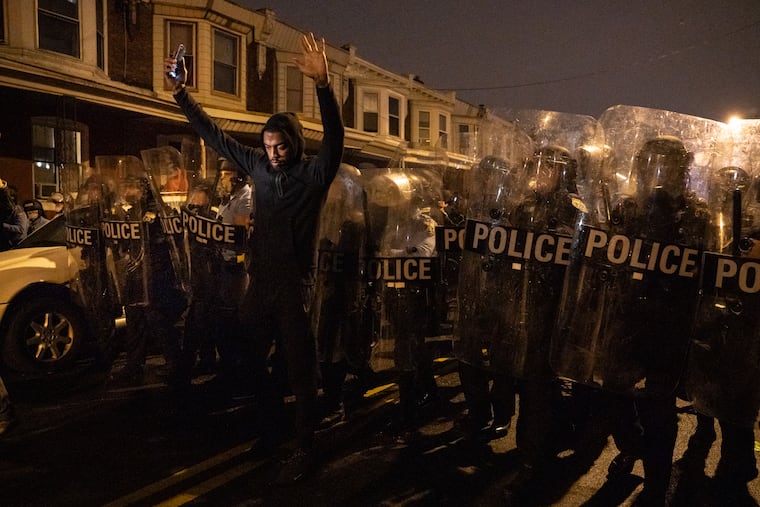Police officers who killed Walter Wallace Jr. wore body cameras. Release the footage. | Editorial
If the officers who shot Walter Wallace Jr. indeed did nothing wrong according to police use of force protocol, then the state of policing is even more dire than we thought.

Again a Black man is killed by police — this time 27-year-old Walter Wallace Jr. from West Philadelphia.
On Monday afternoon, Philadelphia police officers arrived at the 6100 block of Locust Street, where they encountered Wallace with a knife. Wallace “advanced toward the officers,” according to a police spokesperson.
A video taken by a bystander shows Wallace walking toward police officers who are pointing their guns at him. Wallace’s mother and another man try to hold him back in an effort to defuse the situation. As Wallace continues to walk toward the two officers, they both suddenly open fire, striking him 10 times, according to his father.
Wallace’s mother wails, and cradles his body. According to Walter Wallace Sr., his son was a father with a known history of mental health issues.
Having someone walk toward you with a knife is frightening. But as the agents of the state with the monopoly on the use of deadly force, police officers are supposed to be trained in de-escalation and to have tools to utilize before they discharge their weapon multiple times.
Again, protests erupted after the shooting. The residents along the commercial corridor of 52nd Street that is still recovering from unrest and police brutality in response from late May again saw smoke from dumpster fires and a burning police cruiser outside their windows — and police responding with batons.
Again, officials responded with somber statements. Mayor Jim Kenney said: “I have watched the video of this tragic incident and it presents difficult questions that must be answered.” Commissioner Danielle Outlaw added that she will be “leaning on what the investigation gleans to answer unanswered questions.”
But it’s Kenney and Outlaw who need to provide us answers. And considering that the city is still waiting for many answers on the police response to the protests this spring, there is little reason for confidence that the investigation into the killing of Wallace will be swift and transparent.
Again, the Fraternal Order of Police immediately defended the officers.
If the police officers who shot Walter Wallace Jr. 10 times indeed did nothing wrong according to PPD use-of-force protocol — which has been revised in recent years and is again under review — then the state of policing in Philadelphia is even more dire than we thought. It also makes it more urgent to explore non-policing responses to behavior and mental health crises, as other evolved nations and cities do.
Both of the police officers who shot Walter Wallace Jr. wore body cameras. Mayor Kenney and Commissioner Outlaw should release the footage. In too many incidents, including the original excuse for the use of force on I-676, official footage contradicted the official account given to the public. The lack of trust in police also extends to its investigations of their own. Residents must see the evidence for themselves.
After a Minneapolis police officer killed George Floyd, Kenney released strong statements condemning police brutality and Outlaw applauded the Minneapolis police chief for his “swift and certain response to this tragedy.” Now when the tragedy hits closer to home, their action should match their rhetoric — and release the footage.